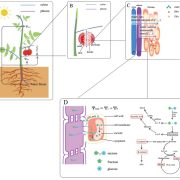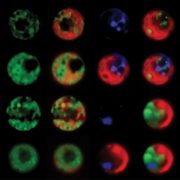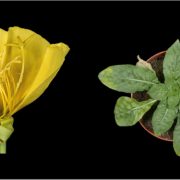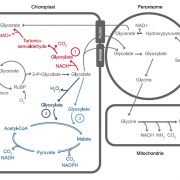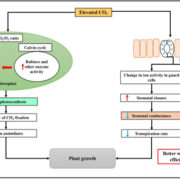Chlorophyll can be reduced in crop canopies with little penalty to photosynthesis
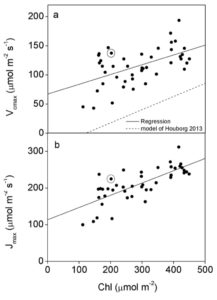 The effect of reducing leaf chlorophyll content on canopy CO2 assimilation (Acan) is somewhat contentious. Walker et al. obtained data from 67 soybean accessions to parameterise a canopy-root-soil model (MLCan) in order to simulate the effect of altering chlorophyll levels on Acan. There was no increase in Acan when chlorophyll content was reduced – while lower canopy layers had elevated assimilation in pale green lines, upper layers performed less well than dark green counterparts. Paler lines also exhibited an increase in lost PPFD through leaf reflectance, while leaf biochemical capacity did not match the redistribution of PPFD throughout the canopy. However, encouragingly there was little detrimental effect on Acan of even very large reductions in chlorophyll, indicating that nitrogen could be repartitioned to the benefit of limiting processes in soybean leaves. These results will be invaluable in formulating a strategy to increase Acan in dense canopy crops such as soybean. (Summary by Mike Page) Plant Physiol.
The effect of reducing leaf chlorophyll content on canopy CO2 assimilation (Acan) is somewhat contentious. Walker et al. obtained data from 67 soybean accessions to parameterise a canopy-root-soil model (MLCan) in order to simulate the effect of altering chlorophyll levels on Acan. There was no increase in Acan when chlorophyll content was reduced – while lower canopy layers had elevated assimilation in pale green lines, upper layers performed less well than dark green counterparts. Paler lines also exhibited an increase in lost PPFD through leaf reflectance, while leaf biochemical capacity did not match the redistribution of PPFD throughout the canopy. However, encouragingly there was little detrimental effect on Acan of even very large reductions in chlorophyll, indicating that nitrogen could be repartitioned to the benefit of limiting processes in soybean leaves. These results will be invaluable in formulating a strategy to increase Acan in dense canopy crops such as soybean. (Summary by Mike Page) Plant Physiol.


